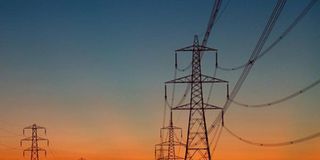Uganda to export electricity to South Sudan, DR Congo

The governments of Uganda and South Sudan have signed a cross-border agreement allowing Uganda to extend electricity inside the South Sudan border towns of Kaya and Nimule
What you need to know:
The South Sudan minister for electricity and dams, Dr Dhiev Mathok Diing Wol, who signed on behalf of his government, said the agreement fulfils the regional leaders’ agreement to electrify the border towns so as to spur socio-economic activities in the border towns so as to reduce refugee migrations into Uganda.
- Between March 2016 and March 2017, for instance, Uganda’s inflows from exporting power to especially Kenya were at $35.6 million (approximately Shs127b, up from $16.9million (Shs60b), according to the Bank of Uganda.
Kampala. The governments of Uganda and South Sudan have signed a cross-border agreement allowing Uganda to extend electricity inside the South Sudan border towns of Kaya and Nimule.
Speaking at the signing ceremony on Monday in Kampala, the State minister for Energy, Mr Simon D’ Ujanga, said the two countries are implementing the East Africa Community power pool agreement which advocates member states to interconnect electricity to each other depending on proximity.
“Uganda is already implementing cross-border electrification with Rwanda and Tanzania which is supplying power to Rakai and we are going to connect power to eastern DR Congo,” he said.
Mr D’Ujanga added that after signing the Memorandum of Understanding with South Sudan on Monday, both countries are forming a joint technical committee to quantify the scope of work because already, Uganda has extended power supply to the Nimule and Kaya but on the Uganda side.
“All the power is coming from Uganda. We will supply 400KV of electricity, we already have electricity in Nimule and Kaya but on Uganda side and now we want to extend it inside South Sudan,” he said.
The South Sudan minister for electricity and dams, Dr Dhiev Mathok Diing Wol, who signed on behalf of his government, said the agreement fulfils the regional leaders’ agreement to electrify the border towns so as to spur socio-economic activities in the border towns so as to reduce refugee migrations into Uganda.
“It is President Museveni’s idea that people in the border towns be given electricity to spur socio-economic activities so that it can reduce refugee migrations into Uganda,” he said.
Mr Wol added that after connecting the border towns, the technical committee will continue with studies on how to extend power to Juba and both governments will finance the project.
Uganda’s current installed generation capacity is close to 900MW. Besides Karuma (600MW) and Isimba (183MW), developers are currently constructing many mini hydropower plants, which will add between 100MW and 200MW to the national grid.
The power export is out of the realisation that as two large hydropower projects are near commissioning, local demand will not snap it all up immediately.
Export Inflows
Between March 2016 and March 2017, for instance, Uganda’s inflows from exporting power to especially Kenya were at $35.6 million (approximately Shs127b, up from $16.9million (Shs60b), according to the Bank of Uganda. As of March 2017, Uganda was exporting 51.1 megawatts (MW) to Kenya, 14.94MW to Tanzania and 0.27MW to DRC. Exports though are also because some border towns are easily served by the neighbours’ grids.
South Sudan has the lowest electricity consumption per capita in Sub-Saharan Africa, according to USAID.


